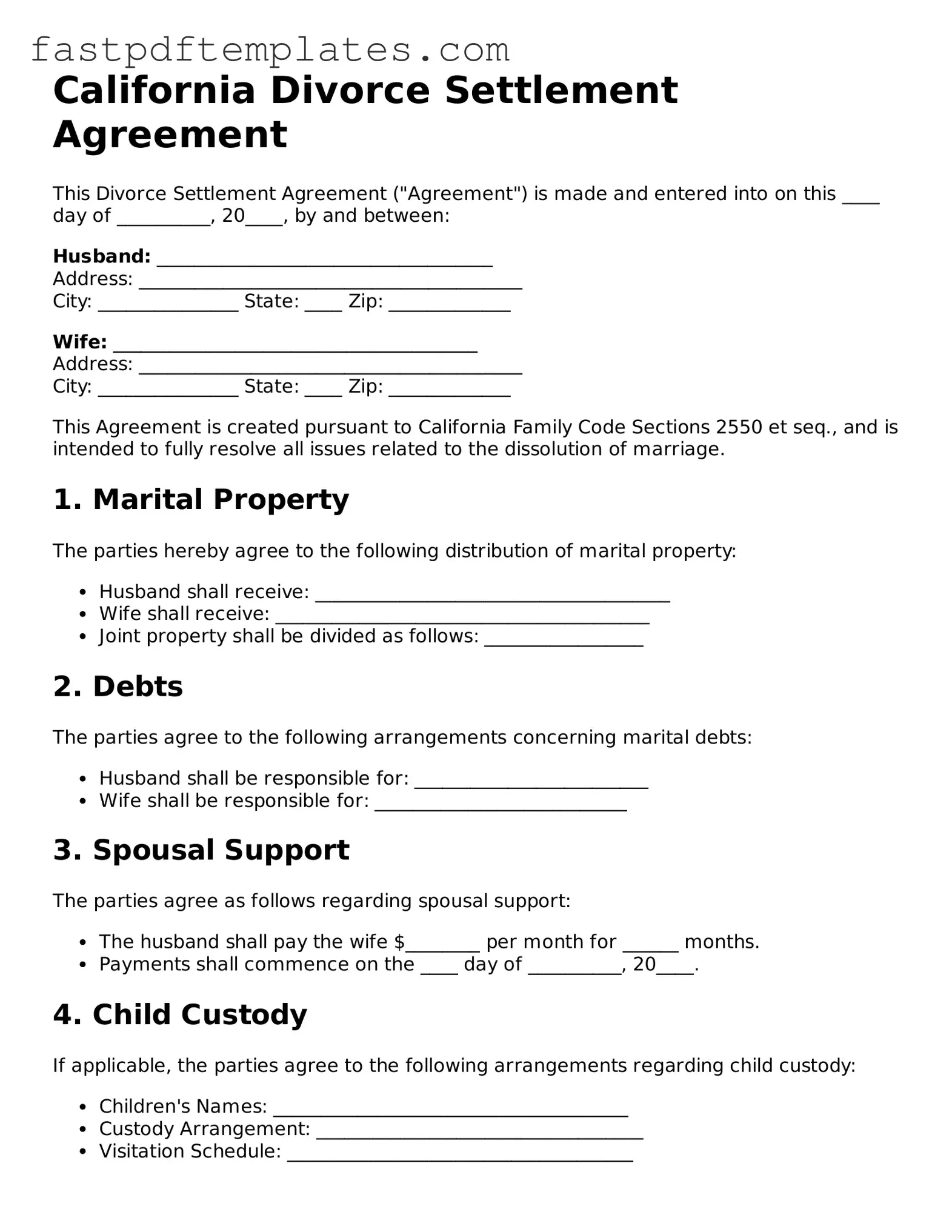California Divorce Settlement Agreement
This Divorce Settlement Agreement ("Agreement") is made and entered into on this ____ day of __________, 20____, by and between:
Husband: ____________________________________
Address: _________________________________________
City: _______________ State: ____ Zip: _____________
Wife: _______________________________________
Address: _________________________________________
City: _______________ State: ____ Zip: _____________
This Agreement is created pursuant to California Family Code Sections 2550 et seq., and is intended to fully resolve all issues related to the dissolution of marriage.
1. Marital Property
The parties hereby agree to the following distribution of marital property:
- Husband shall receive: ______________________________________
- Wife shall receive: ________________________________________
- Joint property shall be divided as follows: _________________
2. Debts
The parties agree to the following arrangements concerning marital debts:
- Husband shall be responsible for: _________________________
- Wife shall be responsible for: ___________________________
3. Spousal Support
The parties agree as follows regarding spousal support:
- The husband shall pay the wife $________ per month for ______ months.
- Payments shall commence on the ____ day of __________, 20____.
4. Child Custody
If applicable, the parties agree to the following arrangements regarding child custody:
- Children's Names: ______________________________________
- Custody Arrangement: ___________________________________
- Visitation Schedule: _____________________________________
5. Child Support
If applicable, the parties agree to the following regarding child support:
- The amount of child support shall be $________ per month.
- Payments shall start on the ____ day of __________, 20____.
6. Legal Fees
The parties agree to the following regarding payment of legal fees:
- Each party shall pay their own legal fees.
- Wife shall reimburse Husband for ____% of his legal fees.
7. Miscellaneous Provisions
The parties agree to the following:
- This Agreement contains the entire understanding between the parties.
- No modifications of this Agreement shall be valid unless executed in writing.
- This Agreement shall be governed by the laws of the State of California.
IN WITNESS WHEREOF, the parties have executed this Divorce Settlement Agreement as of the date first written above.
_____________________________
Husband's Signature
_____________________________
Wife's Signature
_____________________________
Date
